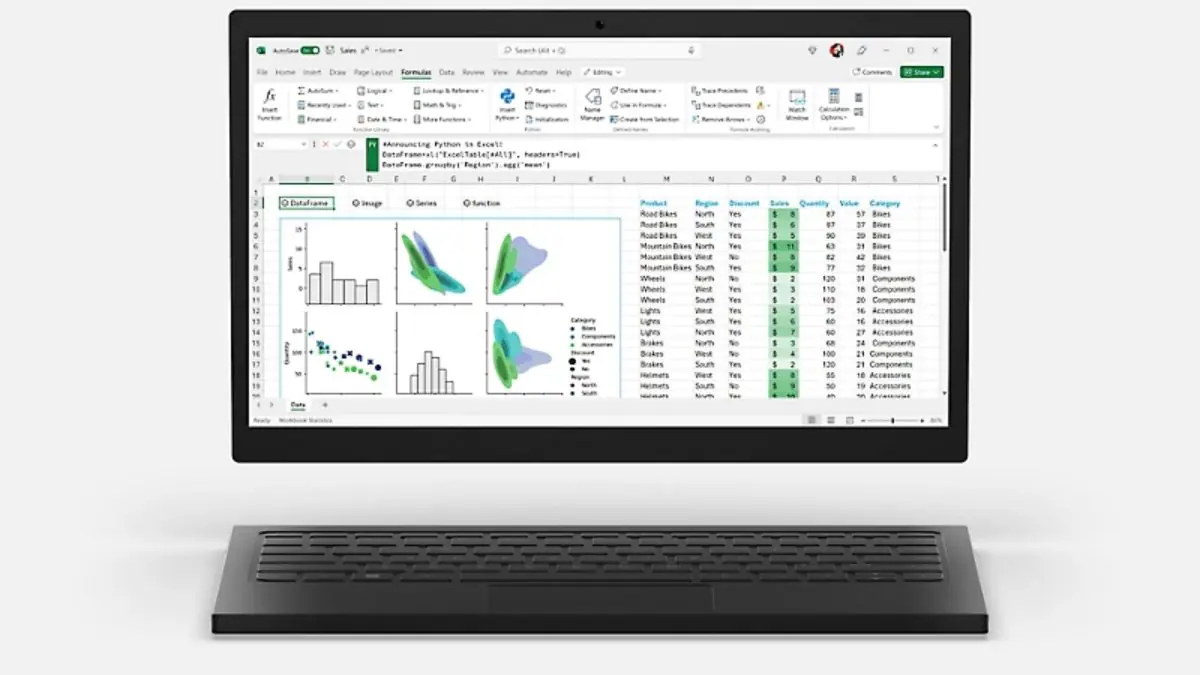Python integration in Excel 365 has revolutionized the way users interact with data, offering a powerful combination of spreadsheet functionality and versatile programming capabilities. By seamlessly incorporating Python scripts into Excel, users can unlock a myriad of possibilities for enhanced data analysis, automation, and visualization. In this article, we will delve into the intricacies of Python integration in Excel 365, exploring its benefits, practical applications, and best practices to empower users in harnessing the full potential of this dynamic duo.
Introduction to Python Integration in Excel 365
Welcome to the world of Python in Excel 365! Prepare to revolutionize your spreadsheet game with the power of programming.
Overview of Python Integration in Excel 365
Python integration in Excel 365 allows users to leverage the versatility of Python programming within the familiar Excel interface.
History and Evolution of Python Support in Excel
Python support in Excel has come a long way, evolving from a nice-to-have feature to a must-have tool for data analysts and automation enthusiasts.
Benefits of Using Python in Excel 365
Dive into the benefits of combining Python with Excel 365, and discover a whole new world of possibilities.
Enhanced Data Analysis Capabilities
Unleash the power of Python’s data analysis libraries to crunch numbers, perform complex calculations, and gain deeper insights from your data in Excel.
Improved Automation and Efficiency
Automate repetitive tasks, streamline workflows, and boost productivity by harnessing Python’s automation capabilities in Excel 365.
Getting Started with Python Scripts in Excel 365
Ready to kickstart your Python journey in Excel 365? Let’s get you up and running with Python scripting.
Setting Up Python Environment in Excel
Learn how to set up your Python environment seamlessly within Excel 365, so you can start scripting without missing a beat.
Writing and Running Python Scripts in Excel
Master the art of writing and executing Python scripts directly in Excel to manipulate data, perform calculations, and automate tasks like a pro.
Advanced Data Analysis and Visualization with Python in Excel 365
Take your data analysis game to the next level with advanced Python tools and techniques integrated into Excel 365.
Utilizing Pandas and NumPy for Data Analysis
Explore the capabilities of Pandas and NumPy libraries to handle large datasets, perform data manipulation, and conduct in-depth analysis within Excel.
Creating Interactive Visualizations with Matplotlib and Plotly in Excel
Elevate your data presentation with stunning interactive visualizations using Matplotlib and Plotly, seamlessly integrated into Excel 365 with Python.
Automating Tasks and Workflows with Python and Excel 365

Automating Data Processing Tasks
Ah, the joy of automating those mind-numbing data processing tasks! Say goodbye to the tedious manual labor of manipulating spreadsheets because Python in Excel 365 is here to save the day. Let your scripts do the heavy lifting while you sip your favorite beverage and watch the magic unfold.
Integrating Python Scripts with Excel Macros
Now, let’s talk about the dynamic duo: Python scripts and Excel macros. By combining the powers of Python with the flexibility of Excel macros, you can create a symphony of automation that will make your workflow sing. Say goodbye to repetitive tasks and hello to a more efficient and streamlined process.
Best Practices for Python Integration in Excel 365
Optimizing Performance of Python Scripts in Excel
When it comes to performance, we want our Python scripts to run like Usain Bolt – fast and efficient. Learn the best practices for optimizing your Python scripts in Excel 365 to ensure smooth sailing and quick execution. Because let’s face it, nobody has time to wait around for sluggish scripts.
Ensuring Data Security and Privacy Compliance
Data security and privacy are like the Batman and Robin of the digital world – always vigilant and ready to protect your valuable information. Discover how to ensure data security and privacy compliance when integrating Python in Excel 365. Keep your data safe and sound while you dance your way through automation.
In conclusion, the integration of Python in Excel 365 opens up a world of opportunities for users to streamline workflows, analyze data more effectively, and create dynamic visualizations. By leveraging the power of Python within Excel, users can enhance their productivity and decision-making processes. As we continue to embrace the synergy between Python and Excel 365, the possibilities for innovation and efficiency are truly limitless.
Frequently Asked Questions (FAQ)
Can I use Python scripts in Excel 365 without prior programming experience?
Yes, you can use Python scripts in Excel 365 even with limited or no prior programming experience. Excel 365 offers an integrated environment that allows you to run Python scripts directly within your workbooks. There are also built-in libraries and templates that simplify tasks, making it easier to automate functions without deep coding knowledge. However, learning basic Python commands will help you maximize the benefits.
Is it possible to share Excel workbooks containing Python scripts with others who may not have Python installed?
Yes, you can share Excel workbooks containing Python scripts with others, even if they do not have Python installed. The recipients will be able to view and use the workbook’s standard features. However, they may not be able to execute or modify the Python scripts unless they are using Excel 365 with Python integration. In such cases, sharing scripts through a service like Microsoft’s cloud environment can ensure compatibility.
How can I troubleshoot common issues when running Python scripts in Excel 365?
When troubleshooting Python scripts in Excel 365, common steps include:
Checking for syntax errors or incorrect commands within the Python code.
Ensuring that all necessary libraries or packages are properly installed and available within the Excel environment.
Verifying that the Python environment is correctly set up within Excel.
Looking at the debugging tools or error messages provided by Excel to identify the issue. If problems persist, refer to online resources or support forums for further guidance.
What are some best practices for ensuring the security of data when using Python in Excel 365?
To ensure the security of data when using Python in Excel 365, consider these best practices:
Use trusted libraries and avoid running scripts from unknown sources.
Regularly update your Python environment and Excel to patch any security vulnerabilities.
Limit access permissions to the workbook containing Python scripts, ensuring only authorized users can edit or run the scripts.
Always encrypt sensitive data and backup your work to prevent loss or breaches.
Apply data validation within your scripts to prevent unauthorized manipulation of the data.

